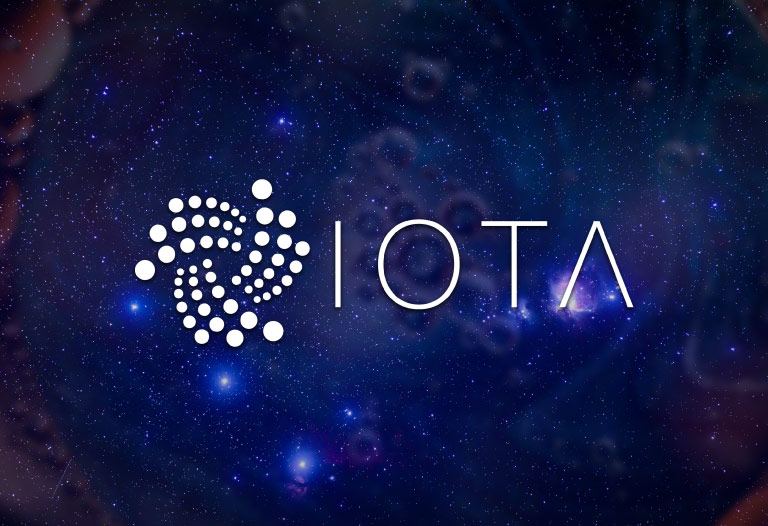
Table of Contents
ToggleThe concept of the internet of things (IoT) is becoming increasingly recognized, whether it’s the amazing drones that deliver Amazon’s packages or virtual assistants like Alexa or Siri.
Clearly, this is due to the perfect communication that these “everyday” objects have with the Internet and with a server that keeps track of everything.
As you can deduce, it is centralized, but what does this have to do with cryptos?
One of the most interesting projects that we can find today is IOTA, a proposal that seeks to achieve a decentralized IoT.
However, here its innovation, because it does not use blockchain technology, like most cryptocurrencies such as Bitcoin or Ethereum.
Its platform and cryptocurrencies are based on a distributed log technology (DLT) called “Tangle”.
Buckle up, because today we’re going to take a quick tour of what IOTA is and how it works.
¿Qué es IOTA?
IOTA is a project consisting of a decentralized platform based on DAG (Directed Acyclic Graph) architecture.
Consequently, it is defined as the first DLT built for the Internet of Everything (IoE), which favors a network for the exchange of value and data between humans and machines.
Therefore, its objective is that, by means of Tangle, anything connected to the Internet can be managed.
Likewise, it is integrally designed to avoid commissions, blockchain and miners.
As a result, it overcomes the cost and scalability limitations of a blockchain.
It was created in 2015 by the IOTA foundation, formed by David Sønstebø and his colleagues Sergey Ivancheglo, Dominik Schiener and Serguei Popov.
Its purposes as a non profit foundation are:
- Investigate and secure the protocol.
- Develop the ready software.
- Educate and promote technology.
- Standardize to ensure IoT adoption.
It was officially launched on July 11, 2016, after successfully raising funds through an ICO and being funded through cryptocurrencies by Germany.
Currently, it has agreements with different ONG and private and governmental entities.

What is IOTA Tangle?
IOTA Tangle is a distributed logging technology (DLT) based on the directed acyclic network algorithm. It is intended to be the bridge that links all IoT devices.
Its working mechanism is based on the idea of parallel, fast and commission-free transactions.
To this end, all IOTA users can confirm transactions within the tangle network, making it efficient, secure and highly scalable.
It is also ideal for executing micro transactions.
How it works
Let’s imagine that you sent 3 IOTA (Miota) to a friend of yours named Andrea.
For this transaction to be confirmed, you must first participate by validating two transactions prior to yours.
To do this, the device you are using must have the necessary software installed to run the IOTA Tangle protocol:
- First, it will confirm that these transactions took place and, therefore, exist.
- It will then verify whether that person has sufficient funds to carry out the transaction.
- Finally, a cryptographic puzzle, very similar to Bitcoin’s Proof of Work, must be solved to verify that it is not spam.
If another person after you wants his transaction to be validated, he must also confirm two transactions and so on, which forms a web like network.
The more people participate in the network, the more secure, powerful and faster it is. This is its differentiating factor with blockchains, since, in blockchains, if the demand is greater, the network becomes saturated and slower.
In addition, each node does not have to store copies of all past transactions, which means that with a given number of users, the number of transactions is almost infinite.
Of course, since everyone is part of the verification and consensus of the transactions, there is no mining and no need for transaction fees.
Their current consensus
Being relatively new, its users have not managed to cover the network. As a result, transactions are currently approved by a node of the IOTA foundation.
Now, in order to obtain a consensus, a coordinator (a special node) is in charge of referencing the transactions issued, which it does by publishing zero-value transactions (milestones) that allow it to validate previous transactions.
Put more simply, a transaction is only verified if it is confirmed with a milestone, which makes it a centralized network.
However, this is expected to change in a few years to his original idea.
What about IOTA (MIOTA) token?
IOTA is a cryptocurrency, or more precisely, a token designed to be used as a means of payment within the IOTA network.
Put another way, it is a digital asset that enables humans and devices to exchange data and services securely, as would be expected within IoT and IoE.
In addition, it seeks to convey trust, as it comes from a non-profit foundation, whose vision is to create a standardized open source protocol for the world to use.

Glad to see you made it this far!
I know this has been an information packed article, but we hope it has been very useful to understand a little more about how the wonderful and wide ranging crypto ecosystem works.
But…oh…wait, you were left wanting more?
Don’t worry! At Bitnovo, we are working hard to make sure you have the best information at your fingertips in our blog.




